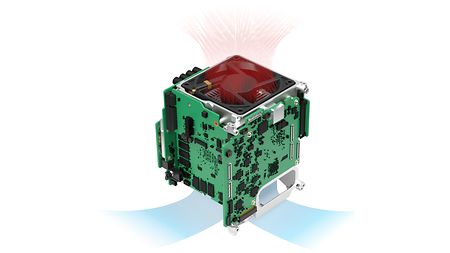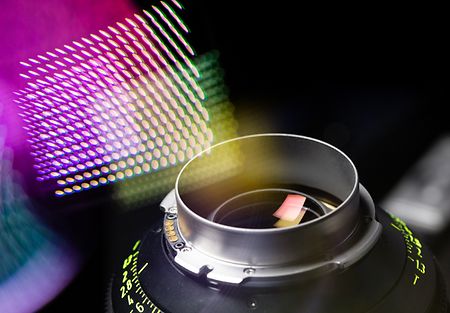ARRI cameras are designed to be the best tool for capturing images and for moving those images from set to post. This requires more than just a camera, it requires a complete digital production system where all components mesh perfectly, including lenses, recording media, recording codecs, electronic accessories, mechanical accessories, batteries, and postproduction tools.
We have worked closely with a number of innovative companies such as Apple, cmotion, Codex, FUJINON, ZEISS, Cooke, and others to integrate their technologies. Through these efforts, from day one, ALEXA was compatible with many existing industry standards, lenses, accessories, and postproduction tools that were already well established all over the world.
In order to offer filmmakers more options on set, our camera systems are based on an open architecture and provide compatibility with third-party products. The cameras use UHD-SDI and HD-SDI for video transmission via cables with standard BNC connectors. On the power side we adapted both the Anton Bauer Gold mount and the V-lock standard for 12 V on-board batteries. Further advancements in technology made it necessary to switch to a 24 V system in ALEXA 35. Therefore, we introduced the 24 V B-Mount in 2022. B-Mount is a rugged, open industry standard for 24 V on-board batteries, and it is brand agnostic: the tech specs are published openly so every manufacturer is invited to provide B-Mount batteries and mounts or, otherwise integrate B-Mount into their ecosystem.
From set to post: to smooth the data’s way into postproduction we are open about our file format ARRIRAW and use Apple ProRes as a de-facto standard of the industry. For ALEXA Mini and AMIRA, we adopted MXF as the wrapper for ARRIRAW when writing to CFAST 2.0 cards. MXF-wrapped ProRes followed when Apple accepted MXF in addition to MOV-wrapped ProRes (SMPTE RDD 44: Mapping of ProRes into MXF). ALEXA Mini LF and ALEXA 35 write exclusively MXF-wrapped files.
To guarantee a smooth ARRIRAW workflow, we have been working tirelessly with third parties that have enrolled in the ARRIRAW Partner Program. Companies in the partner program receive advanced notification of changes in codecs, recording formats or image processing, to incorporate them early into their products. So, when your post house receives ARRIRAW clips from set, their tools will be able to understand and process ARRIRAW and ARRI Look Files.







